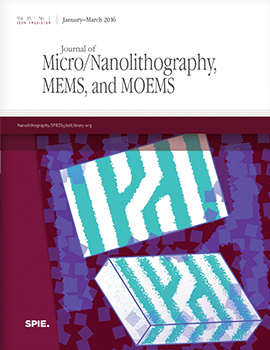James Loomis, Dilan Ratnayake, Curtis McKenna, Kevin Walsh
Journal of Micro/Nanolithography, MEMS, and MOEMS, Vol. 15, Issue 01, 013511, (March 2016) https://doi.org/10.1117/1.JMM.15.1.013511

TOPICS: Computer aided design, Photoresist materials, Photomasks, Grayscale lithography, Solid modeling, Calibration, 3D modeling, Microelectromechanical systems, Photoresist developing, Ultraviolet radiation
Grayscale lithography is a relatively underutilized technique that enables fabrication of three-dimensional (3-D) microstructures in photosensitive polymers (photoresists). By spatially modulating ultraviolet (UV) dosage during the writing process, one can vary the depth at which photoresist is developed. This means complex structures and bioinspired designs can readily be produced that would otherwise be cost prohibitive or too time intensive to fabricate. The main barrier to widespread grayscale implementation, however, stems from the laborious generation of mask files required to create complex surface topography. We present a process and associated software utility for automatically generating grayscale mask files from 3-D models created within industry-standard computer-aided design (CAD) suites. By shifting the microelectromechanical systems (MEMS) design onus to commonly used CAD programs ideal for complex surfacing, engineering professionals already familiar with traditional 3-D CAD software can readily utilize their pre-existing skills to make valuable contributions to the MEMS community. Our conversion process is demonstrated by prototyping several samples on a laser pattern generator—capital equipment already in use in many foundries. Finally, an empirical calibration technique is shown that compensates for nonlinear relationships between UV exposure intensity and photoresist development depth as well as a thermal reflow technique to help smooth microstructure surfaces.



 Receive Email Alerts
Receive Email Alerts